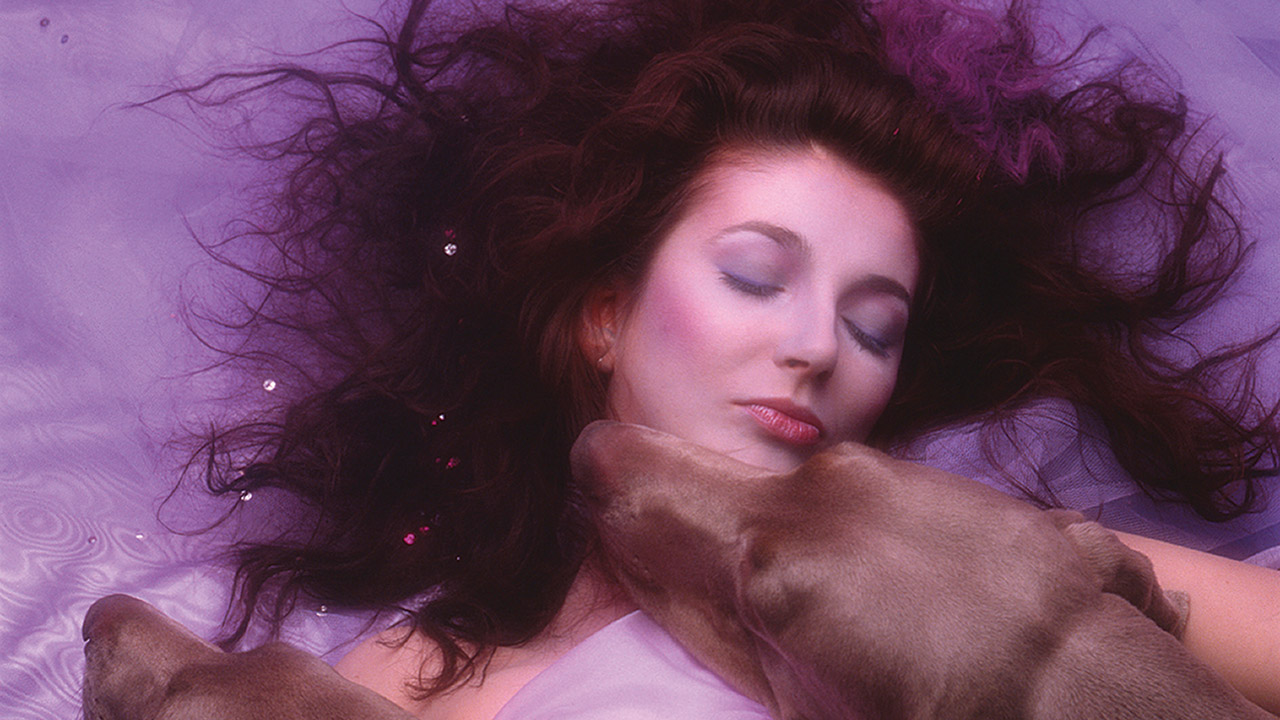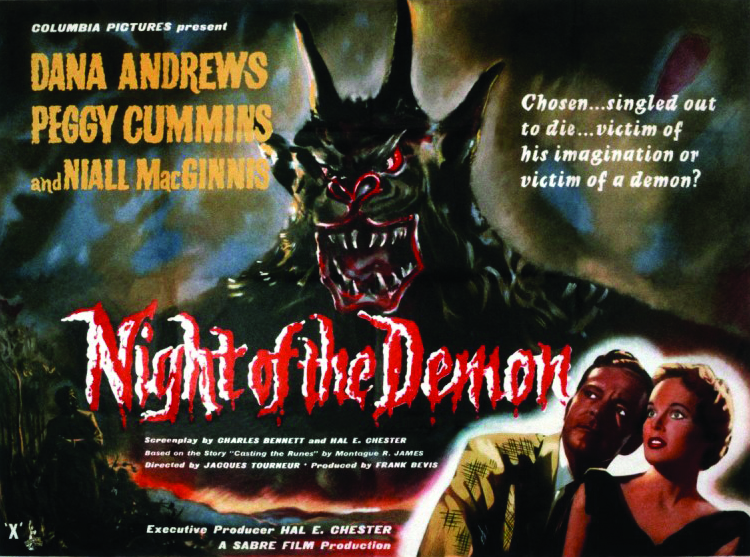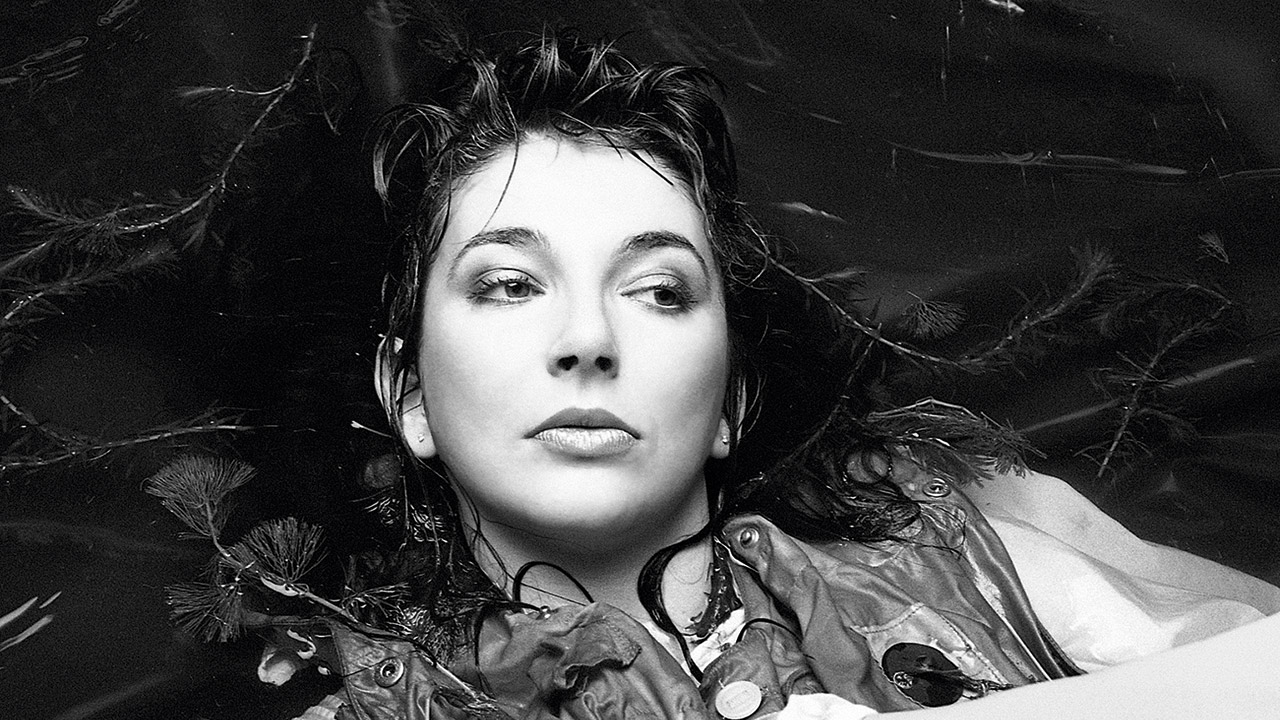“Maybe bits of me don’t want to grow up. Maybe I am an escapist, a romantic. I dislike cynicism. It’s bad energy. Does that make me childlike?” Kate Bush on the inspiration behind Hounds Of Love
After the experimental left-turn of The Dreaming, Hounds Of Love's contemporary prog sound saw Kate Bush back at No. 1

On August 5 1985, Kate Bush made an appearance on Terry Wogan’s early evening BBC1 chat show. Introduced by the avuncular host, the singer lip-synced her way through her new single, Running Up That Hill (A Deal With God). Standing at a wooden podium while clad in what looked like a monk’s cowl, and backed by a group of similarly-attired musicians, she looked like a cross between a politician and a 16th century religious leader.
Her presence on prime time Tv was something of a surprise. Just a few days earlier, the NME had mentioned Bush in a piece headlined ‘Where Are They Now?’. Unfortunate timing aside, you could see their point. It had been three years since the singer had last released an album, and she’d been largely absent from the spotlight since then – a lifetime away in those pre-internet days. Rumours swirled that she’d ballooned to 18 stone, or was living as a recluse in the French countryside, or both.
As the Wogan appearance proved, the rumour about her weight wasn’t true. And while she had retreated from public view, it was to Kent rather than France, and she certainly hadn’t been idle. What she had been doing was working on her fifth album, away from the eyes of the media and her own record label.
That record, which would hit the shelves a month after her TV reappearance, was Hounds Of Love. Her fifth album, it retained the progressive spirit of her earlier career while bringing both a new maturity and a wild sense of anything-goes abandon to her work. It would be a watershed for Bush, ushering in the second act of her career, and influencing such disparate talents as Within Temptation, Bjork, and The Futureheads. At the time, it sounded like nothing else around. Today, almost 30 years on, it stands as one of the most visionary records ever made.
“I love the fact that she’s very happy to explore her world without worrying about compromise or what’s commercial for the record company,” says her long-time friend and occasional collaborator Peter Gabriel, who would be credited for ‘opening windows’ on
Ironically, it was that desire to hold the music business at arm’s length that indirectly prompted Bush’s self-enforced three-year break. Her previous album, 1982’s experimental and occasionally baffling The Dreaming, had seen her take full creative control of her music. But the record had been a commercial failure, selling only 60,000 copies in the UK. Worse, the pressures of recording it had reportedly pushed the singer to the brink of nervous exhaustion. Having foresworn life on the road following her sole 1979 tour, there were no commitments hanging over her head. She was free to step back and fade into the background.
“There was some re-evaluation, yes,” she said in 1985. “Taking so long a break made me realise what was important – which was my work, much more than being famous.”
Sign up below to get the latest from Prog, plus exclusive special offers, direct to your inbox!
Bush and bassist (and then-boyfriend) Del Palmer retreated to the farm they shared in East Wickham, on the south east fringes of London. They began constructing a 48-track home studio in a barn, and it was there, in the summer of 1983, that they began working on what would become Hounds Of Love. The surroundings, and the absence of pressure, began to feed into the music she was creating.
“I was surrounded by elemental forces,” she said. “And I was feeling really happy and positive, and considering mankind to be much better than on the last album.”
The freedom of not having to answer to anyone was both a blessing and a curse. The writing and recording process was long and often tortuous. More than once Bush described what she was doing, and how she was doing it, as “mad”.
“Work obsesses me and everyone around is dragged into it,” she later said. “It’s terrible… I sometimes think I might as well just be a brain and a big pair of ears on legs, stuck in front of a mixing desk.”
But being in total control had more upsides to it than it did downsides. Crucially, it allowed her to get away with things that a record company would have blocked in the past – or at least attempted to block. Here, she was free to indulge her ambitions to their fullest. And Hounds Of Love was hugely ambitious on every level.
For starters, the album’s structure was far from conventional. It was clearly divided into two distinct halves – one for each side of the original vinyl album. Side one was relatively conventional: a set of five songs that ostensibly stood alone but were in reality held together by thin conceptual thread. “All the songs are linked by the fact that they’re about relationships of some kind,” Bush explained. “They’re all love songs, really.”
Of course, a Kate Bush love song is unlike anyone else’s love song. Running Up That Hill (A Deal With God) took a unique view of the male-female relationship. “It’s the two people in the song, a man and a woman, that want to make a deal with God in order to swap places with each other,” she explained. “That if the man could be the woman, and vice-versa, they would understand what it’s like from that other person’s point of view and that perhaps there’d be less problems in the relationship.”
Musically, Bush had always drawn her inspiration from outside of the pop sphere (“I have never seen a Madonna video,” she said of the era’s other defining female star. “I’d rather listen to Delius, Bach or Satie.”) Her early folk and prog leanings had gradually been subsumed into a bigger, more baroque whole, and Hounds Of Love knitted together all the strands. Where the darkly atmospheric opening track Running Up That Hill (A Deal With God) beat with a Fairlight heart, the title song, with its sawing cellos and relentless percussive spine, evoked a wild chase through tangled woodland. Elsewhere, double bass and didgeridoos drifted into the mix, and Greek and Irish rhythms danced cheek to cheek. Tellingly, she cited New Age record label Windham Hill and ECM, the home of acclaimed jazz guitarist Pat Metheny and German double bass maestro Eberhard Weber, as influences (Weber would feature on three of the album’s tracks, including the stately Mother Stands For Comfort).
Her influences weren’t just musical. Hounds Of Love itself started with a sample (“It’s in the trees! It’s coming!”) from cult 1957 horror film Night Of The Demon, lending the song an unlikely mix of foreboding and kitsch. The album’s second single, Cloudbusting, was even more audacious. Inspired by Book Of Dreams, a memoir of controversial 20th century psychoanalyst Wilhelm Reich by his son Peter, it brought together psychology, familial relationships and rain-making machines in four exhilarating minutes (in the memorable video for the song, Bush played Peter Reich as a child, complete with boy’s wig, while Hollywood star Donald Sutherland played Wilhem Reich). On The Big Sky, she treated her music like a vast painting daubed with blue and white, broken only by the presence of a plane in one of the corners (‘We pause for the jet…’)

If the album’s first half at least paid lip service to the traditional idea of an ‘album’, then the second was something else entirely. An interlinked, seven-song suited titled The Ninth Wave – named after, though confusingly not inspired by, a line from Alfred Lord Tennyson’s poem The Coming Of Arthur, as well as Aivazovsky’s painting – it was Bush’s grandest piece of music yet. A vivid, hallucinatory song-cycle, it related the tale of a woman swept out to sea in a storm and spends the night fighting against the waves and the elements. Its seeds lay in a trip Bush made to Ireland as she was writing the album.
“I was writing lyrics and we were right by the sea,” she said. “I love the sea. It’s the energy that’s so attractive – the fact that it’s so huge. And war films, where people would come off the ship and be stuck in the water with no sense of where they were, or of time, like sensory deprivation. It’s got to be ultimately terrifying.”
The Ninth Wave extended the watery metaphor across its seven tracks, charting the progress of its helpless protagonist, from the woozy And Dream Of Sheep, in which the woman is drawn into the sea, through to the redemptive The Morning Fog, which ended both the suite and the album on an optimistic note. The result was one part cinematic extravaganza, one part moving piece of art, all loaded with metaphors for what she described as “a very deep inner experience.”
While she touched subjects she’d covered before – the male perception of the female psyche on Waking The Witch, the closeness and distance of family on Watching You Without Me, environmental concerns on Hello Earth – nowhere did it feel like she was re-treading old ground. She also dug deep into her Rolodex, enlisting the talents of ex-Pentangle bassist Danny Thompson, Comic Strip actor Robbie Coltrane (who provided one of the many voices on Waking The Witch), and, on the exuberant Jig Of Life, respected Irish folk musicians Dónal Lunny, Liam Flynn and John Sheahan, plus her own brother poet John Carder Bush, who lent weighty narration to the track. The Ninth Wave, like Hounds Of Love as a whole, was typical Bush – worldly-wise and childlike at the same time.
“Maybe bits of me don’t want to grow up,” she said in 1985, shortly after the album’s release. “Maybe I am an escapist, a romantic. I dislike cynicism. It’s bad energy. Does that make me childlike?”
Hounds Of Love was released on September 16, 1985. It entered the UK charts at Number One, displacing Madonna’s Like A Virgin and putting Bush squarely back in the public eye. In an era where MTV-fuelled pop ruled, the success of such an unashamedly progressive, unarguably intelligent album felt like a momentous achievement.
The length of time between Kate Bush albums lengthened – it would be four years before her next record, 1989’s The Sensual World, and 12 between 1993’s The Red Shoes and her 2005 comeback Aerial. Neither the gaps between records nor the records themselves would have been possible without Hounds Of Love. Nearly three decades on, it remains Kate Bush’s defining artistic statement, and one of the most visionary albums ever recorded.
“She’s a great artist and Hounds Of Love showed that she’s capable of making wonderful things,” says Peter Gabriel. “It’s still sounds timeless.”
This article originally appeared in issue 44 of Prog Magazine.

Dave Everley has been writing about and occasionally humming along to music since the early 90s. During that time, he has been Deputy Editor on Kerrang! and Classic Rock, Associate Editor on Q magazine and staff writer/tea boy on Raw, not necessarily in that order. He has written for Metal Hammer, Louder, Prog, the Observer, Select, Mojo, the Evening Standard and the totally legendary Ultrakill. He is still waiting for Billy Gibbons to send him a bottle of hot sauce he was promised several years ago.

